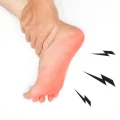What is Saddle Anesthesia?
Saddle anesthesia is a condition in which there is a loss of sensation or numbness in the saddle area, which includes the buttocks, inner thighs, and genitalia. The term “saddle” refers to the area of the body that would come into contact with a saddle if a person were riding a horse.
Saddle anesthesia is usually caused by nerve damage or compression in the lower spinal cord or nerve roots. It can occur due to a variety of reasons, such as a herniated disk, spinal stenosis, or a spinal cord injury.
The history of saddle anesthesia can be traced back to the early 19th century when doctors first began to study the anatomy and physiology of the spinal cord. In 1836, Sir Charles Bell, a Scottish anatomist and surgeon, described the symptoms of saddle anesthesia in patients with spinal cord injuries.
In the late 19th and early 20th centuries, doctors began to develop new techniques for diagnosing and treating saddle anesthesia. In 1894, Dr. William James Morton, an American physician, performed one of the first successful surgical treatments for saddle anesthesia by removing a spinal tumor that was compressing the nerves in the lower spinal cord.
In the 20th century, advancements in medical imaging, such as X-rays and MRI scans, allowed doctors to more accurately diagnose the underlying causes of saddle anesthesia. They also developed new treatments for the condition, such as physical therapy, medications, and surgical procedures.
Causes Saddle Anesthesia
Here are 10 possible causes of saddle anesthesia:
- Herniated disk: A herniated disk in the lumbar spine can compress the nerves that supply sensation to the saddle area.
- Spinal stenosis: Narrowing of the spinal canal in the lower back can cause compression of the spinal cord or nerves, leading to saddle anesthesia.
- Trauma: Injury to the spinal cord or nerves in the lower back, such as from a car accident or fall, can cause saddle anesthesia.
- Tumors: Cancerous or non-cancerous tumors in the spinal cord or surrounding tissues can compress nerves and lead to saddle anesthesia.
- Infections: Certain infections, such as meningitis or abscesses, can affect the nerves in the lower back and cause saddle anesthesia.
- Degenerative disc disease: As people age, the discs in their spine can wear down and cause compression of the nerves in the lower back, leading to saddle anesthesia.
- Ankylosing spondylitis: This is a type of arthritis that can cause inflammation and fusion of the vertebrae in the spine, leading to compression of the nerves in the lower back.
- Spinal cord injury: Trauma to the spinal cord can cause damage to the nerves that supply sensation to the saddle area.
- Multiple sclerosis: This autoimmune disease can damage the myelin sheath that surrounds nerves, leading to saddle anesthesia.
- Diabetes: Chronic high blood sugar levels can damage the nerves in the lower back, leading to saddle anesthesia.
Is Saddle Anesthesia Permanent?
Whether saddle anesthesia is permanent or not depends on the underlying cause of the condition. In some cases, saddle anesthesia may be temporary and can be treated effectively with conservative measures or surgery. In other cases, it may be a permanent condition that cannot be fully reversed.
For example, if the cause of saddle anesthesia is a herniated disc in the lower back, conservative treatments such as physical therapy, pain medication, or injections may be effective in relieving the symptoms. Surgery to remove the herniated disc may also be an option if other treatments fail. In these cases, saddle anesthesia may be temporary or reversible.
However, if the underlying cause of saddle anesthesia is a spinal cord injury or disease that has caused irreversible nerve damage, the condition may be permanent. In these cases, treatments may focus on managing symptoms and improving quality of life rather than reversing the underlying condition.
Symptoms of Saddle Anesthesia
The symptoms of saddle anesthesia can vary depending on the underlying cause and severity of the condition. Some common symptoms include:
- Loss of sensation or numbness in the saddle area, including the buttocks, inner thighs, and genitalia.
- Tingling or a pins-and-needles sensation in the saddle area.
- Weakness or difficulty moving the legs.
- Difficulty with bowel or bladder function, such as incontinence or constipation.
- Sexual dysfunction, such as difficulty achieving or maintaining an erection or difficulty achieving orgasm.
- Pain or discomfort in the lower back, buttocks, or legs.
- Muscle spasms or cramps in the lower back or legs.
If you are experiencing any of these symptoms, it is important to see a doctor immediately. Saddle anesthesia can be a sign of a serious underlying condition that requires prompt medical attention. A doctor will be able to perform a physical exam and order imaging tests to determine the cause of your symptoms and recommend appropriate treatment.
Saddle Anesthesia Test
To diagnose saddle anesthesia, a doctor will typically perform a physical exam and order imaging tests to determine the underlying cause of the symptoms. Here are some tests that may be used:
- Neurological exam: A doctor will evaluate the patient’s muscle strength, reflexes, and ability to feel sensations in the saddle area.
- Imaging tests: X-rays, MRI scans, or CT scans can help to identify any abnormalities in the spinal cord or nerves that may be causing the symptoms.
- Electromyography (EMG): This test measures the electrical activity of the muscles and nerves in the lower back and legs, which can help to identify nerve damage or compression.
- Nerve conduction studies: This test measures how quickly electrical impulses travel through the nerves in the lower back and legs, which can help to identify nerve damage or compression.
- Urodynamic testing: This test measures the function of the bladder and urethra, which can help to identify any problems with urinary function that may be related to saddle anesthesia.
- Rectal exam: A doctor may perform a rectal exam to evaluate the function of the anal sphincter and pelvic floor muscles, which can also be affected by saddle anesthesia.
It is important to note that not all of these tests may be necessary, and the specific tests used will depend on the individual patient’s symptoms and medical history. A doctor will be able to determine the appropriate tests to diagnose saddle anesthesia.
Frequently Asked Questions (FAQs)
Here are 10 frequently asked questions (FAQs) about saddle anesthesia:
How is saddle anesthesia diagnosed?
A doctor will perform a physical exam and may order imaging tests, electromyography, nerve conduction studies, urodynamic testing, or a rectal exam to diagnose saddle anesthesia.
How is saddle anesthesia treated?
The treatment of saddle anesthesia depends on the underlying cause of the condition. Conservative treatments such as physical therapy, pain medication, or injections may be effective in some cases, while surgery may be necessary in other cases. In some cases, the condition may be permanent and treatment may focus on managing symptoms.
Can saddle anesthesia be prevented?
Saddle anesthesia may be prevented by maintaining good spinal health, avoiding trauma to the lower back, and managing conditions such as diabetes that can cause nerve damage.
How long does saddle anesthesia last?
The duration of saddle anesthesia depends on the underlying cause of the condition and the effectiveness of treatment. In some cases, it may be temporary and resolve with treatment, while in other cases it may be permanent.
Can saddle anesthesia be a sign of a serious condition?
Yes, saddle anesthesia can be a sign of a severe condition such as spinal cord injury or disease. It is important to seek medical attention if you are experiencing symptoms.
Is saddle anesthesia a common condition?
Saddle anesthesia is relatively uncommon and is typically associated with underlying conditions or injuries affecting the lower back or spinal cord.





